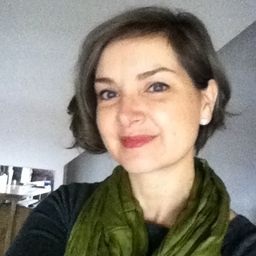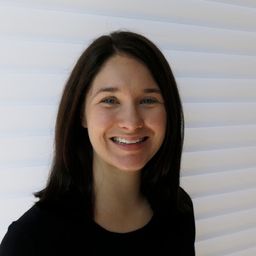The Artistry of Heritage
Mon statut pour la session
This session explores artist-history exchanges in the context of heritage sites, venues and spaces, and considers recent curatorial and artistic interventions and performative strategies, such as decolonial methodologies. Drawing on disciplinary art history, this session approaches heritage sites as strategically re-deployed historic structures that function as representational signs – artifactual objects furnished with other objects that cumulatively and, by virtue of their provenance, preservation, conservation and subsequent institutionalization, validate the interpretation by reconceiving authority as so-called “historical authenticity.” Historians, curators and interpreters use the objects at hand, conducting extensive research, to offer interpretations that position the site’s representation as legitimate, credible and ultimately authoritative. While historical venues can provide visitors with experiential moments of different times and places, present-day circumstances often require recognizing, acknowledging, eradicating, reconceptualising or decolonizing perceptions and representations of the past.
Over the past three decades in North America, artists, curators and heritage practitioners have collaborated to develop contemporary art exhibitions installed within historical sites, projects referred to in related scholarship either as “museum interventions” or, more pointedly, “artist-history interventions.” As art historians, curators and practicing artists Jim Drobnick and Jennifer Fisher explain, the term “museum intervention” describes “the collaboration between artists and institutions to transform the museum from a container of cultural artifacts to a medium of contemporary work. In this practice, the museum context becomes the raw material or ‘cultural readymade’ for artistic analysis, commentary and reconfiguration” (2002, 15). Artist-history exchanges thus provide innovative ways to satisfy cravings for uniquely novel and authentic experiences and so, with the advent of Web 2.0 and social media, they foster opportunities for dynamic interaction and thus function as a strategy to entice new audiences, as identified in the 2010 American Art Museums’ report on diversity. Significantly, they also frequently implicate viewers in their own subjectivities by “tweaking” the expected conventions of installations (Stokes Sims, 12-16). While some interventions aim to reconfigure these places as destinations appealing to a global (or international) audience, others critique the policies, practices and power structures governing heritage sites. In terms of the latter, such endeavours oftentimes seek to disrupt authoritative experiences of the past, thereby re-activating heritage sites as tools to foster communal and critical reflection; these projects require deliberately strategic and calculated considerations of the degree to which the conventional representation(s) might be challenged. Accordingly, this session invites individuals engaged in the fields of visual and material culture – emerging, midcareer, and established artists and cultural workers alike – to consider, describe, and analyze how practicing artists contribute to heritage site development, programming and policies and reveal new ways to think about local, regional, national, and global histories. We invite papers that consider the following, but not limited to, artists interventions and critical engagement with historic sites (monuments, museums, and public spaces) in relation to decolonizing strategies, the living archive, artistic collaboration, and community engaged art/curatorial practice. Finally, we encourage the consideration of how projects presented draw on practices, concepts, and techniques explored decades earlier, be they “soft” (invited/commissioned) or “hard” (uninvited).
Sous sessions
This paper foregrounds, as critical “artist-history exchanges,” performative interventions that act upon everyday spaces and objects with the imperative of unsettling colonial logics. Focusing on my recent durational performance, “memoration #2: constituent parts,” as the primary case study, I will examine the ways in which the body in performance can be strategically mobilized to re/consider, reveal, and disturb the constructions and erasures embedded within spaces, material/visual cultur...
January 11th, 2015, marked the 200th anniversary of the birth of Canada’s first prime minister, Sir John A. Macdonald. Kingston, Ontario, commemorated its connection with Macdonald through a year-long bicentennial celebration. As a response to the bicentennial, whose discourse was predominately celebratory, I curated a performance series titled “Talkin’ Back to Johnny Mac.” The series was dedicated to promoting alternative and critical discussions about Macdonald’s role in Canadian history...
While Alex Colville’s artworks reside in private and public collections around the world, Colville himself remained grounded in primarily in Sackville, New Brunswick, and later in Wolfville, Nova Scotia. Colville (1920–2013) cited the fact that his immigrant father “experienced terrible uprootedness. Every time you move, you lose your friends, you lose your known environment, you undergo what is in a certain sense a real trauma…. I like being where I know what is going on.” Using the examp...
This presentation will describe two projects by DisplayCult that have evolved out of our on-going engagement with redefining notions of the aesthetic and commitment to experimenting with exhibition prototypes. Whereas “The Servant Problem” involved a series of tableaux vivants with the curators themselves assuming the guise of “minor characters” in the history of Eldon House in London, in turn, “Museopathy” involved commissioning contemporary artworks that were installed in herita...
In anticipation of the “Final Report of the Truth and Reconciliation Commission of Canada,” this paper will examine Canada’s federal place-based heritage infrastructure and will critique the policy and practice of the Historic Sites and Monuments Board of Canada (HSMBC) relative to its engagements with the history of Indian residential schools (Ios) and difficult heritage in general. Interpreting Ios survivor-led commemoration and heritage practices as healing and decolonizing, and drawing...
In being a memorial to the Bronte sisters—writers of the “unimaginably famous” Jane Eyre and Wuthering Heights—the Bronte Parsonage museum in Howarth, Yorkshire, is one of the most visited literary shrines in the world. Every year, nearly one hundred thousand “literary pilgrims” travel, often long distances, to pay their respects to these long dead writers and explore the liminal space of their home, landscape and literary imagination. The development of the Bron...
Upon its completion in 1622 the Inigo-Jones-designed Banqueting House in Whitehall opened with a performance of “The Masque of the Augurs.” Written by Ben Jonson (1572-1637), this site-specific drama portrays the tensions between courtly decorum and royal magnificence that underpin many English Renaissance court masques. The Masque of the Augurs represents a purposeful distillation of Jones’ artistic vision, taking into account the relatively austere classical exterior of the Banqueting Ho...
Among the more than eight thousand photographs of the British landscape that Fred Judge took between 1904 and 1924, a considerable number were of rural workers: shepherds, farmers and fisher-folk in particular. What is evident is that most of these occupations that he recorded with his camera were about to either disappear from the landscape or become irrevocably transformed thanks to technology such as the tractor. It is uncertain however how conscious he was of this. Did he, in other wor...
Bearing in mind the legacy of artist-history interventions, this paper will address one such project to consider how heritage collections can be reanimated by contemporary artists, as well as the impact of these initiatives as a means to rethink the role of Western heritage museums and how they structure representations of identity. I will focus my examination on the museum intervention “Lost Bodies” by Brendan Fernandes, which will be on display at the Agnes Etherington Art Centre (AEAC) ...
When I first visited the Samuel de Champlain monument in 1992, I never imagined that one day, the kneeling Indian at the base of the monument would be removed. But in 1999, that day came and to my surprise I found that the empty platform inspired a new series of work. I invited artist Greg Hill to come to the site and bring his canoe made from cereal boxes and pose on the empty platform. This was the beginning of “Seize the Space.” The story about the Indian Scout was interesting, in that ...







Discussion